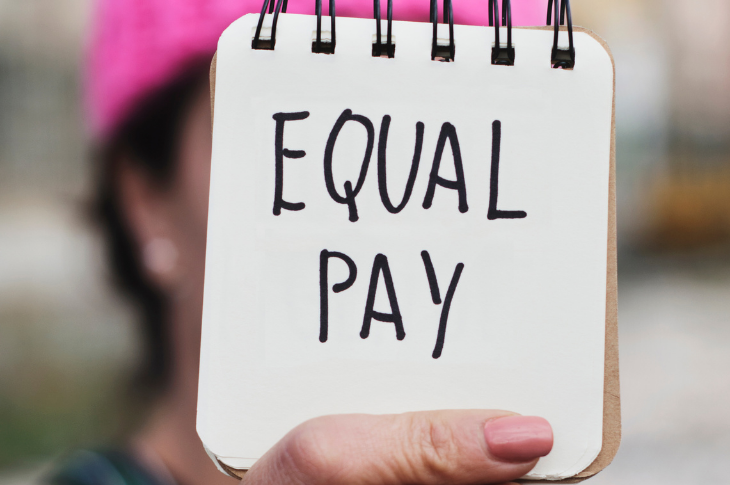How Do We Reduce the Gender Pay Gap

For the first time, the Workplace Gender Equality Agency (WGEA) annual data scorecard has broken down the data by age, revealing that the gender pay gap exists at all ages and increases with age.
The gender pay gap measures the difference between the average earnings of women and men in the workforce. The gender pay gap is an internationally established measure of women’s position in the economy in comparison to men.
What does the ‘gender pay gap’ mean?
What it is: The gender pay gap measures the difference between the average earnings of women and men in the workforce. The gender pay gap is an internationally established measure of women’s position in the economy in comparison to men. The gender pay gap is the result of the social and economic factors that combine to reduce women’s earning capacity over their lifetime.
Closing the gender pay gap goes beyond just ensuring equal pay. It requires cultural change to remove the barriers to the full and equal participation of women in the workforce.
What it is not: It is not the difference between two people being paid differently for work of the same or comparable value, which is unlawful. This is called unequal pay. Equal Pay is when men and women receive equal pay for work of equal or comparable value. In practical terms, this means that:
- men and women performing the same work are paid the same amount
- men and women performing different work of equal or comparable value are paid the same amount.
Workplace Gender Equality Agency (WGEA) and Australian Bureau of Statistics (ABS) data both show a gender pay gap favouring full-time working men over full-time working women in Australia.
The gender pay gap often starts when women first enter the workforce. A combination of factors affect women’s lifetime economic security and makes it likely that over a lifetime women will earn less than men, be less likely to advance their careers as far as men, and accumulate less superannuation and savings than men, and will therefore be more likely to live in poverty in old age.
You can access an overview of the WGEA’s workplace gender equality data, including gender pay gaps, in the latest scorecard.
What drives the gender pay gap?
The gap between women’s and men’s earnings is a symptom of a broader cultural problem in workplaces. It reflects the historic and systemic undervaluing of women’s workplace contributions and the significant barriers that lead to the under-representation of women in senior executive and management roles.
The gender pay gap is influenced by a number of factors, including:
- conscious and unconscious discrimination and bias in hiring and pay decisions
- women and men working in different industries and different jobs, with female-dominated industries and jobs attracting lower wages
- lack of workplace flexibility to accommodate caring and other responsibilities, especially in senior roles
- high rates of part-time work for women
- women’s greater time out of the workforce for caring responsibilities impacting career progression and opportunities.
- women’s disproportionate share of unpaid caring and domestic work
The gendered nature of the workforce in 2020-2021
During 2020-21, the COVID pandemic has impacted workforces and workplaces in Australia, with changes to working conditions, employment patterns as well as a focus on health and wellbeing policies. This report captures data from the aftermath of the first wave of COVID in 2020, up to the time just before the second wave hit in mid-2021. During this time there were signs of economic and employment recovery in all states with the exception of Victoria. The 2020-21 data shows that industries and occupations, as well as working patterns, continue to be highly gender segregated. Women bore some of the greatest impacts during the pandemic, with high concentrations of women in industries such as retail. Front-line employees – teachers, nurses, and shop assistants – are predominantly women accounting for approximately 60% of the gender pay gap.
Women earned, on average, $25.8K less than men in 2020-21
The gender pay gap is 22.8% (down 0.5pp from 2019-20), based on the WGEA total remuneration data for all workers, including the full-time equivalent of part-time and casual employees. This equates to men earning, on average, $25,792 more than women last year.
Types of gender pay gaps within organisations:
When conducting a pay gap analysis, employers can look for three types of pay gaps:
- Equal pay for like-for-like roles.
- By-level pay gaps – comparing responsibilities and skills at levels within organisations.
- Organisation-wide pay gaps – the difference between the average remuneration of women and the average remuneration
of men across the organisation.
How Do We Reduce The Gender Pay Gap?
- Introduce policies that normalise time out of the workforce – like gender neutral parental leave
- Normalise flexible work for both men and women
- Set and monitor targets for men and women equally using these policies
- Rethink and redesign part-time roles for managers
- Assist access to affordable childcare
“In times of a tight talent market, attracting and retaining highly skilled and capable women is more important than ever.” – WGEA Director, Mary Wooldridge
Read more of the WGEA report here.
Not a member? Join now.




